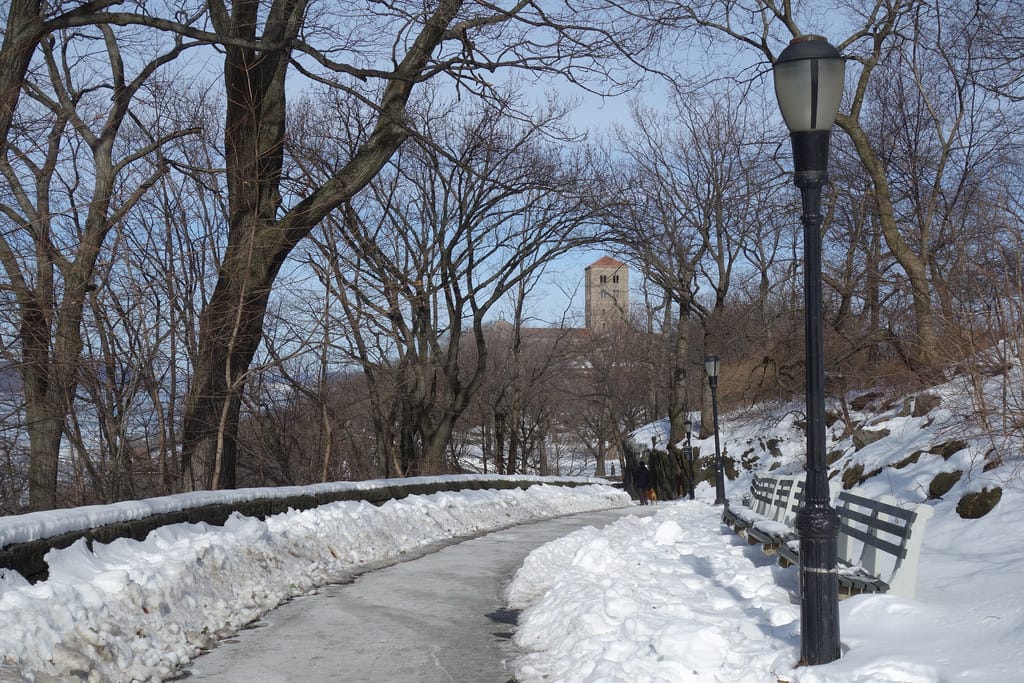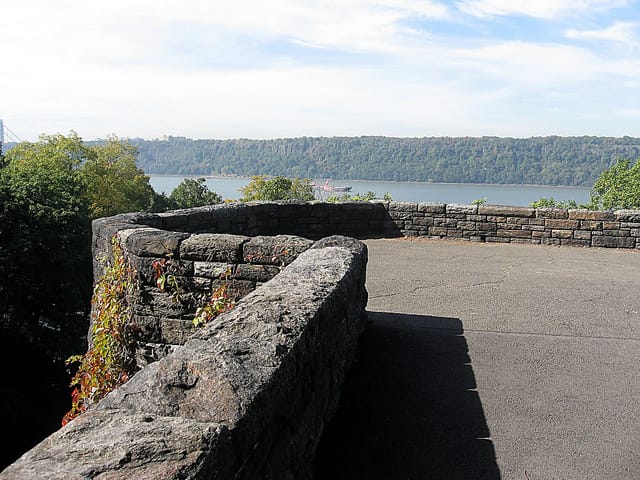Manhattan's Last Natural Vista Will Be Protected
The unbroken vista of cliffs and trees on the New Jersey Palisades will be preserved after LG Electronics agreed to redesign their headquarters in a settlement with conservation groups.

The unbroken vista of cliffs and trees on the New Jersey Palisades will be preserved after LG Electronics agreed to redesign their headquarters in a settlement with conservation groups. LG’s proposal to build a 143-foot building would have sliced through the foliage, which is directly across from the Metropolitan Museum of Art’s Cloisters medieval art branch in Manhattan.
Thomas P. Campbell, director of the Metropolitan Museum of Art, said in a statement that “LG’s hearteningly responsible decision to lower the height of its planned new headquarters in Englewood Cliffs ensures that this remarkable natural wonder will endure unscathed — without inhibiting corporate expansion in New Jersey.”

The modified plan succeeds years of opposition following the 2012 zoning approval for the Korean electronics company. When John D. Rockefeller donated the land that is now Fort Tryon Park around the Cloisters as well as the view across the Hudson in the 1930s, all subsequent development was kept under 35 feet. Opponents to building beyond that included the National Park Service, the Metropolitan Museum of Art, groups like Protect the Palisades, and Rockefeller’s grandson Larry Rockefeller. National attention increased with a listing on the 2014 Watch of the World Monuments Fund and the National Trust for Historic Preservation’s 2014 list of America’s 11 Most Endangered Historic Places.
Stephanie K. Meeks, president and CEO of the National Trust for Historic Preservation, said in a statement: “It is heartening to know that the place where some of the country’s earliest conservation efforts took place will remain unspoiled.” The plan has hopefully found a balance between providing an economic boost to Englewood Cliffs in New Jersey, while maintaining the only Manhattan view that resembles the natural landscape Henry Hudson sailed into long before a river was named for him. It’s also encouraging for other preservation plights that may seem like local issues, but can have national significance in how natural vistas and zoning are respected in new development.







